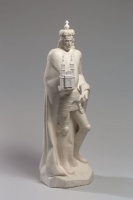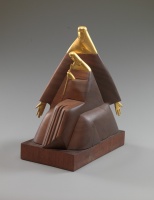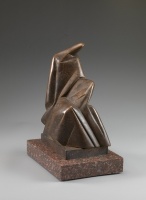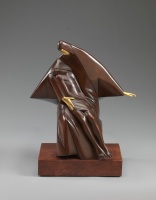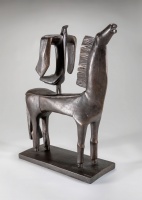
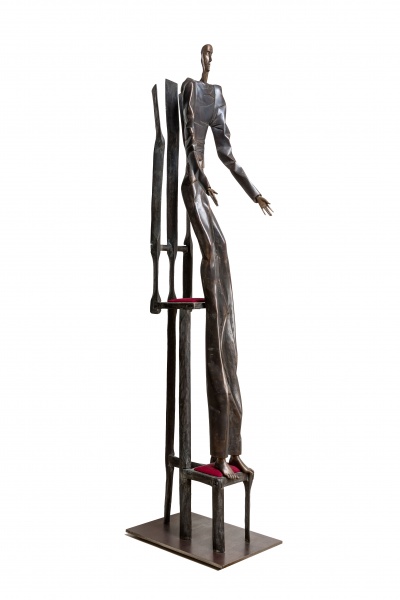
Žilvinas' Metamorphosis into Human Form
| Author: |
Stanislovas Kuzma (1947–2012) |
| Created: | 2012 |
| Material: | bronze, silk |
| Dimensions: | 189 × 30 cm |
Bronze cast based on a wood (alder) sculpture in 1971.
Stanislovas Kuzma (1947–2012) was a key figure in the process of the liberation of sculpture that began in the 1970s. His authentic self-expression was most evident in decorative and small-scale sculptures. Kuzma often used the figures of Eglė and Žilvinas in his work, depicting elongated human forms at moments of transformation: Eglė turning into a tree, and Žilvinas turning into a human. In 1981, large oak sculptures of Eglė and Žilvinas were erected at Juknaičiai, where Kuzma lived with his family from 1976 to 1985, at the invitation of the director of the local collective farm Zigmuntas Dokša. The art critic Alfonsas Andriuškevičius described Kuzma᾽s sculptures as having an extremely intense emotional aura. Žilvinas is a dynamic, almost exalted, figure, seemingly breaking away from its base, with its movement and transformation emphasised by the expressive folds of his clothing. Kuzma depicted the moment of his metamorphosis many times: two wooden sculptures are in private collections, and the same motif appears in a series of drawings.
Kuzma saw 1968 as a turning point in his career: ‘At that time, another aspect of sculpture that particularly struck me was size and scale in artistic creation. From monumental pieces to small-scale works, I grasped the concepts of monumentality and small-scale sculpture. These two genres have profoundly influenced my artistic journey ever since.’*
Text author Jurgita Ludavičienė
* A quote from the artist’s diary for the year 1994, Stanislovas Kuzma, Skulptūra +5425 dienos, NDG, Vilnius 2013, p. 10.
Source: Law firm Valiunas Ellex art album THE ART OF MATERIALS. Compiler and text author Jurgita Ludavičienė© VŠĮ „Lietuvos dailės fondas“







